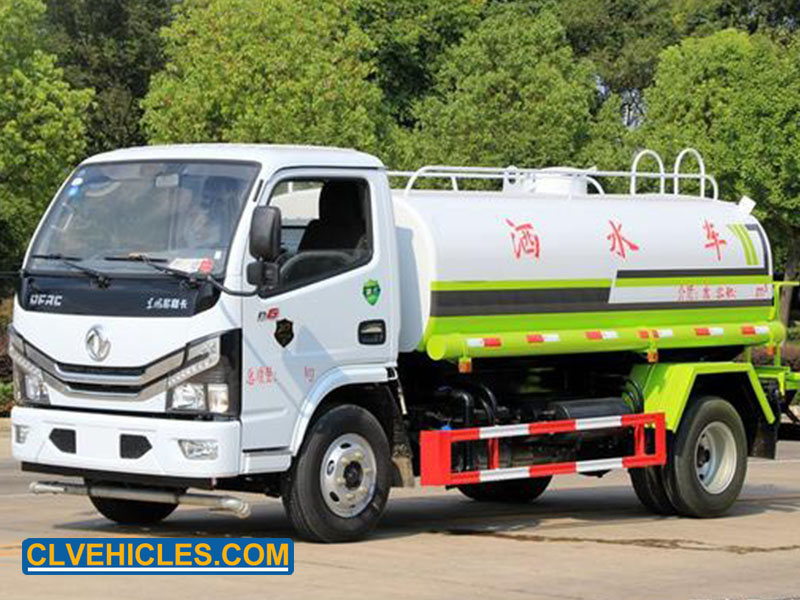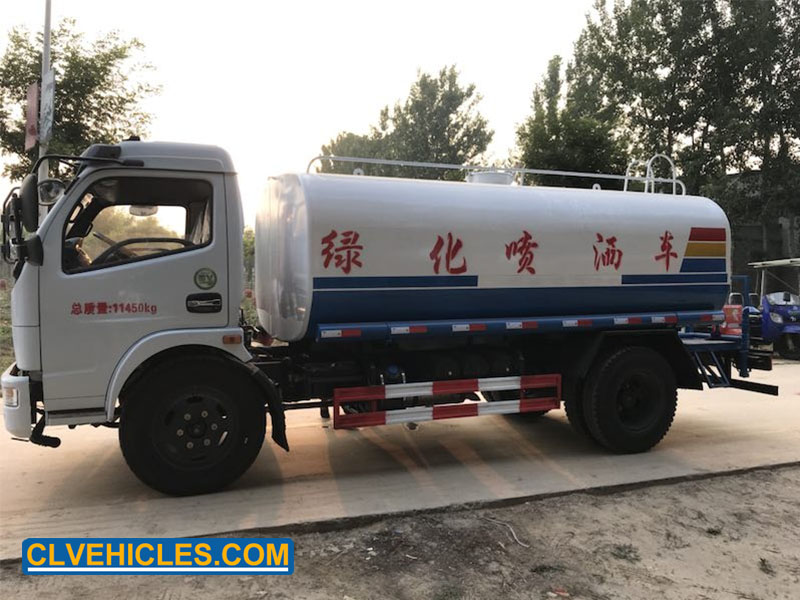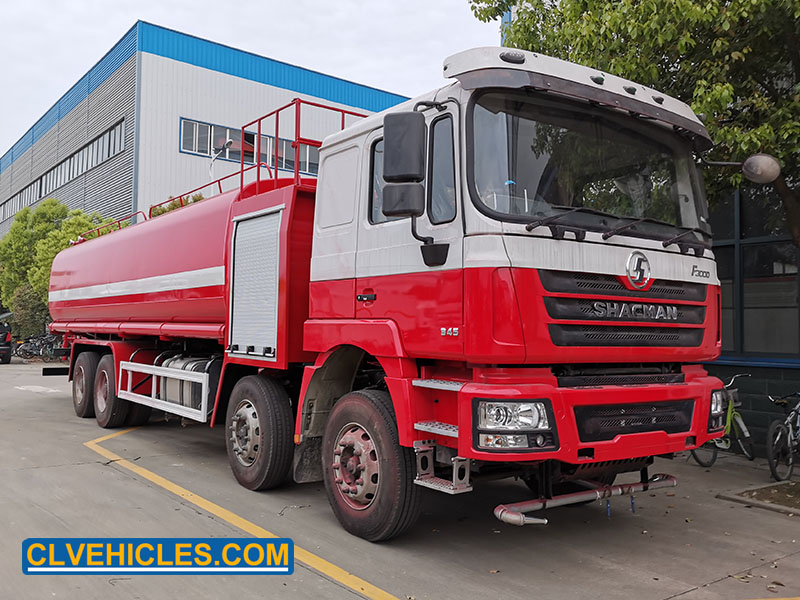The sprinkler truck is a water tanker composed of rust-proof water, power take-off, transmission shaft, spraying system, working platform, special sprinkler pump, pipeline, etc. installed on the second-class automobile chassis. The most commonly used are sanitation sprinklers truck and green sprinklers truck. There are three major categories of fire sprinklers. Next, CLVEHICLES.COM will briefly tell users the difference between sanitation sprinklers, green sprinklers, and fire sprinklers.

First, let's take a look at the configuration and functions of the sanitation sprinkler truck. The sanitation sprinkler has a standard configuration, so it is also called: the standard sprinkler, which is mainly equipped with a self-priming and self-draining special sprinkler pump, with a suction range of 7 meters and a lift. 65 meters, with front flush, back spray, side spray, high-pressure water cannon, fire hydrant inlet, etc. The high-pressure water cannon can rotate 360 degrees and has a range of 28 meters. It can spray out various water flow patterns such as heavy rain, moderate rain, drizzle, fog, straight-through, and blooming. Users can choose different spray forms according to different use environments and needs.. The sanitation sprinkler has functions such as road washing, dust pressure cooling, emergency fire fighting, etc., and is mainly used for road sprinkling of municipal sanitation, highway management departments, airport terminals, large factories and mines, etc. More related road washing truck is hotselling.

The greening sprinkler truck is on the basis of the ordinary sprinkler, and a special greening medicine tray of 15m-20m is added for greening, equipped with high-position showers and seedling spraying devices. An independent power spraying unit is also optional, making it a pesticide spraying truck. This kind of greening spraying truck with water tank can complete pesticide spraying of large areas of vegetation, and has high working efficiency, wide application range, fast spraying speed, and can spray while driving. Greening sprinklers are mainly used for landscaping, greening project construction, gardening companies, nurseries, large-scale pastures and large-scale planting bases, golf courses, farmland orchards, and greening maintenance of vegetable bases.
Fire sprinkler trucks are based on ordinary sprinklers, equipped with special fire sprinkler pumps, full-power sandwich power take-offs, and fire-fighting water monitors are installed at the top of the tank or between the cab and the tank. The fire water monitor has a range of about 45-65 meters. In addition to having all the functions of a sprinkler, the fire sprinkler also compensates for the small range and low flow of the sprinkler. Fire-fighting sprinklers are generally suitable for the fire-fighting trucks of forest fire departments, coal coke watering to cool down, mine dust reduction, and mining areas. It can also be used for landscaping, road sprinkling, fire fighting in living quarters, fire fighting in factory areas, and as a water truck in water-scarce areas to reduce dust and suppress dust at the demolition site.

评论
发表评论